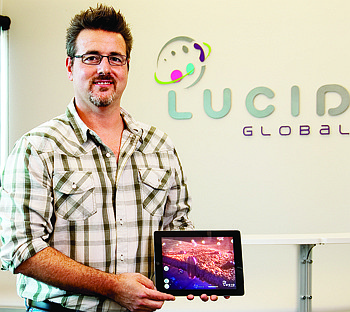- July 26, 2024
-
-
Loading

Loading

Sharecare, a digital health company that helps people manage health records in one place, co-founded by celebrity TV medical professional Dr. Mehmet Oz, has acquired Sarasota-based medical virtual reality firm BioLucid.
Financial terms of the deal, announced at Advertising Week 2016, weren't released.
BioLucid, founded in 2011, has a host of medical virtual reality products, including a holographic projection float shown on a high-definition screen. So a doctor talking to a patient about a liver procedure, for instance, can provide a 3-D preview on an iPad of what's going to happen. Several products the company has developed are patent-pending. The company will continue to operate from its downtown Sarasota office, under the name Sharecare Reality Lab.
“Sharecare Reality Lab will enrich the medical content and resources within the Sharecare platform by contributing stunning medical graphics and virtual reality capabilities,” BioLucid Executive Vice President of Sales and Marketing Zelka Ridjosic says in e-mail sent today about the transaction. “We are excited to be part of Sharecare and to have an even greater opportunity to contribute to healthcare innovation by making health visual and all about you.”
Virtual reality is being used in some niche areas of health care, but Sharecare hopes to increase it with BioLucid's technology. Dr. Oz co-founded Sharecare in 2010 with WebMD founder Jeff Arnold, in partnership with several TV studios. The firm uses a social media platform to curate medical expert knowledge.
“Visual storytelling technologies — particularly virtual reality blended with 360-degree video — have boundless potential in healthcare and patient engagement, yet consumer-facing innovation in VR has been limited mostly to entertainment and gaming,” says Arnold, Sharecare Chairman and CEO, in the statement. “By differentiating our platform with BioLucid's immersive simulation of the human body, we can turn data into actionable, visual intelligence, and make a transformative impact on patient engagement, health literacy, medical education and therapy adherence.”